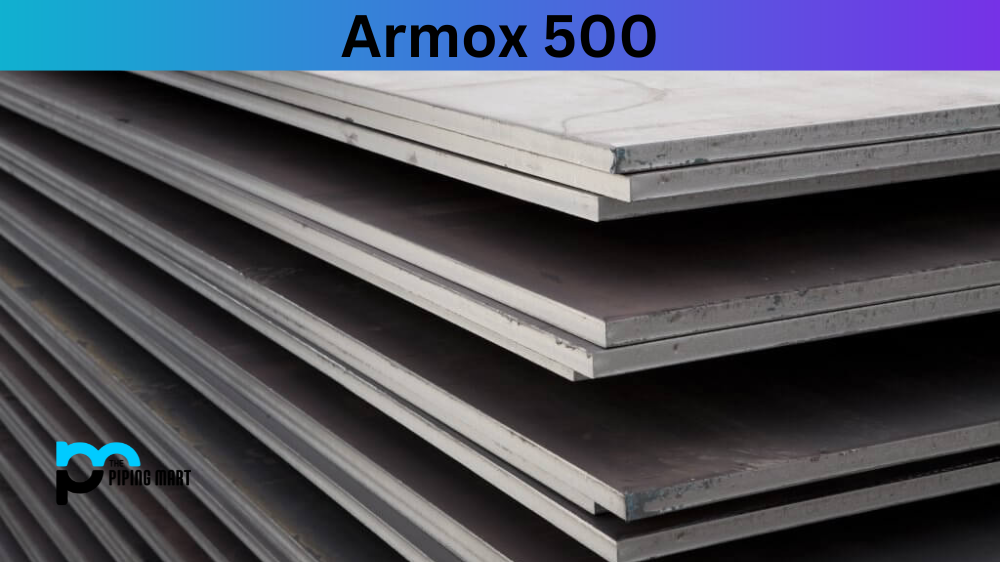Stainless steel is a popular metal alloy used in many industries due to its impressive strength, durability, and corrosion resistance. Several types stand out within the stainless steel family due to their unique properties; one is 455 stainless steel. If you’re working in the construction, medical, or aerospace industries, you’ve likely come across or even used 455 stainless steel. In this blog post, we’ll explore 455 stainless steel’s composition, mechanical and physical properties, uses corrosion resistance, heat treatment, machining, and welding.
455 Stainless Steel Composition
455 stainless steel is a high-strength martensitic stainless steel that contains significant amounts of chromium, nickel, and copper. With a nickel content of about 11%, copper content of 0.5%, and chromium content of 12.5%, it’s known for its corrosion resistance and high toughness.
| Element | Content (%) |
|---|---|
| Chromium, Cr | 11-12.5 |
| Nickel, Ni | 7.5-9.5 |
| Copper, Cu | 1.5-2.5 |
| Titanium, Ti | 0.80-1.4 |
| Molybdenum, Mo | 0.50 max |
| Manganese, Mn | 0.50 max |
| Silicon, Si | 0.50 max |
| Columbium, Cb + Tantalum, Ta | 0.10-0.50 |
| Carbon, C | 0.05 max |
| Phosphorus, P | 0.040 max |
| Sulfur, S | 0.030 max |
| Iron, Fe | Balance |
455 Stainless Steel Mechanical Properties
This type of stainless steel is known for its high yield strength and excellent intergranular corrosion resistance. It’s incredibly durable and can withstand high stress and loads without experiencing deformation. 455 stainless steel has a minimum tensile strength of 586 MPa, a minimum yield strength of 275 MPa, and an elongation of 15%.
| Properties | Metric | Imperial |
|---|---|---|
| Tensile strength | 1413 MPa | 204900 psi |
| Yield strength | 1345 MPa | 195100 psi |
| Modulus of elasticity | 200 GPa | 29000 ksi |
| Poisson’s ratio | 0.3 | 0.3 |
| Elongation at break | 14% | 14% |
| Hardness, Brinell | 411 | 411 |
| Hardness, Knoop (estimated from Rockwell C) | 450 | 450 |
| Hardness, Vickers (estimated from Rockwell C) | 430 | 430 |
| Hardness, Rockwell C | 44 | 44 |
455 Stainless Steel Physical Properties
Regarding physical properties, 455 stainless steel has a density of 7.8 g/cm³, a melting point of 1400-1425 ℃, and a specific heat capacity of 0.50 J/g °C. It has good thermal conductivity and can withstand high temperatures without losing strength.
| Properties | Metric | Imperial |
|---|---|---|
| Density | 7.76 g/cm3 | 0.280 lb/in3 |
455 Stainless Steel Equivalents
- MIL-S-83311
- AMS 5617 Gr 1 Bar
- AMS 5617 Gr 2 Bar
- HMS 6 1093 Rev G
- AMS 5578 Welded tube
- ASTM A693 Grade XM16
- ASTM A564 / ASME SB564
- AMS 5860 Sheet / strip / plate
455 Stainless Steel Uses
455 stainless steel is commonly used in the medical sector for surgical tools, as it’s resistant to corrosion and fatigue. It also sees use in the aerospace industry for its high strength and durability. Additionally, it’s widely used in the petrochemical, machinery, and construction sectors for products that require high strength and corrosion resistance.
455 Stainless Steel Corrosion Resistance
This metal alloy boasts excellent corrosion resistance, especially in an atmosphere containing hydrogen sulfide. It can also withstand exposure to high concentrations of various acids, including acetic, hydrochloric, sulfuric, and nitric acids.
455 Stainless Steel Heat Treatment
Heat treatment is often used to improve the mechanical properties of 455 stainless steel. The most common heat treatment method is annealing, which involves heating the metal to a temperature of about 800 ℃ and cooling it down slowly in the furnace.
455 Stainless Steel Machining
Machining 455 stainless steel can be challenging due to its high strength and toughness, but it’s achievable with the right tools and expertise. Stainless steel cutting tools are suitable for machining, and coolants are essential for efficient cutting to avoid excessive tool wear.
455 Stainless Steel Welding
Welding 455 stainless steel can also be challenging, so professionals should only undertake it. Proper preparation, filler material, and welding parameters should be used to achieve a high-quality weld.
Conclusion
In summary, 455 stainless steel is a high-strength, martensitic stainless steel that offers corrosion resistance, toughness, and durability, making it ideal for various applications. Its robust mechanical and physical properties make it particularly useful in the medical, aerospace, and construction industries. While machining and welding might be challenging due to its high strength, 455 stainless steel’s unique properties make it worthwhile.

Meet Bhavesh, a seasoned blogger with a wealth of knowledge and experience. From metal products manufacturing to retail, Bhavesh has a diverse background in various industries and is dedicated to sharing his insights and expertise with readers.




